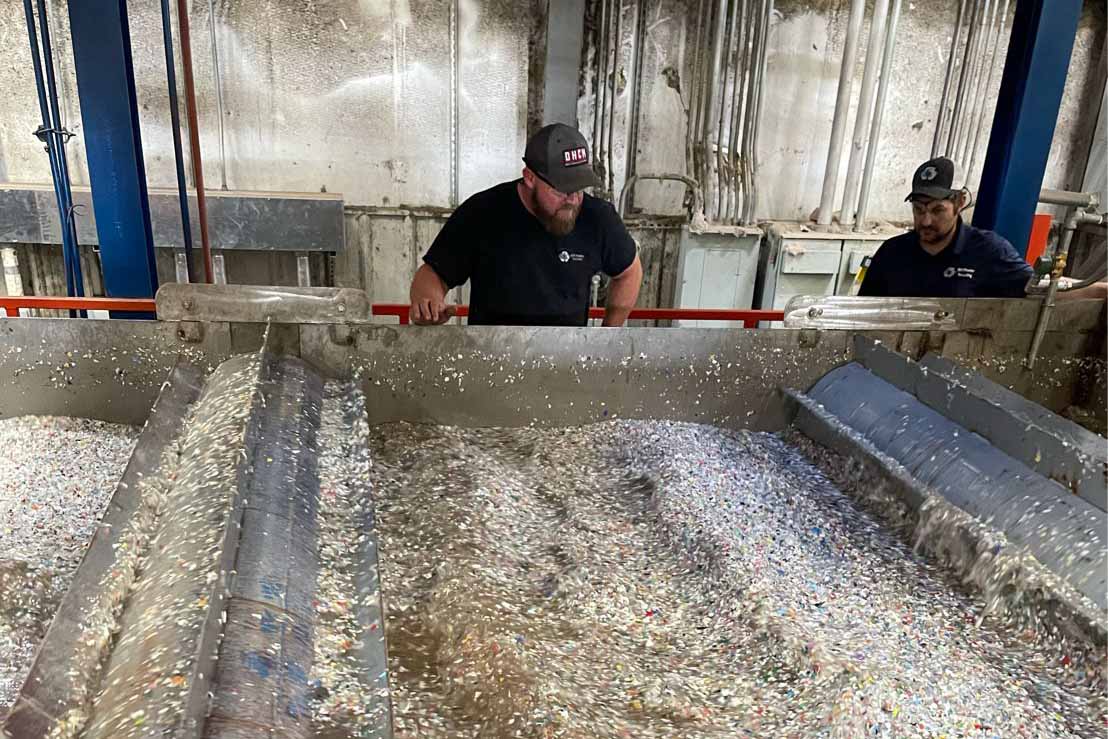
KW Plastics plans to bring an additional 100 million pounds per year of olefin recycling capacity online in the next few months. | Courtesy of KW Plastics
There are plenty of reasons to be gloomy about recycled resin markets these days. But one of the largest plastics reclaimers in the U.S. is staying focused on a course of expansion, and it’s getting ready to start up an additional 100 million pounds per year of olefin recycling capacity.
Troy, Alabama-headquartered KW Plastics has been steadily growing its capabilities over the past three years: It installed a wash line in late 2021, its first new line since 2013, and it’s been adding extruders and other equipment throughout the pandemic and continuing today.
That’s come during a period of significant turbulence for reclaimers, who have faced a landscape of contracting demand and low virgin resin prices, forcing processors to sell their PCR for rock bottom pricing. Despite those pressures, Scott Saunders, general manager of KW, said the company has invested nearly $45 million in equipment over the past three years.
“We’re used to hard-scrabble living,” Saunders said in an interview. He noted that, removing the COVID-19 demand surge from the equation, the historical trend is that a good year for plastics recycling is followed by three hard years. That trend has helped shape KW’s model for business planning, Saunders said. “We’ve found that when the markets are really bad, we’ve had an opportunity to grow the company.”
Now the company is preparing to start up its sixth wash line, capable of processing 100 million pounds per year. It’s designed to run PE and PP, and KW plans to use it primarily on PP because it has additional water filtration technology that isn’t on some of the older lines. The company is planning to have that line operational in the next 60 to 90 days, Saunders estimated.
KW plans to temporarily take some of its older equipment offline for retrofitting, concurrent with the new line install. But in the end, it’s a net capacity increase, and Saunders said across all materials, the company will have a capacity of about 750 million pounds per year.
All of that adds up to significant preparation for what the company sees as a strong future market for recycled resin.
“We do have a pessimistic outlook for the next 18 months,” Saunders said, “but the extended outlook is still positive.”
Projecting future MRF and demand trends
KW’s policy is to aim to have excess capacity in waiting, so when market growth occurs and processing volume increases, the company doesn’t have to reject loads from suppliers due to capacity constraints.
The company faced just that situation just before and during the COVID-19 pandemic, when resin demand grew rapidly.
“We found ourselves, for the first time in the history of the company, running at capacity,” Saunders said. That led KW to install another container wash line during the pandemic, and the company is aiming to be ahead of the market for when that kind of growth happens in the future.
On the supply side, part of KW’s future planning involves monitoring what’s going on at the MRF level. The company is tracking the trend of MRFs retrofitting with new sorting equipment, which is anticipated to increase the quantity and quality of plastic recovered. Saunders noted many of those retrofits are underway this year, so the company anticipates supply could decrease as MRFs take equipment offline during those retrofits. But looking ahead to 2025 and 2026, KW anticipates a possible increase in plastic recovery, including of the PE and PP the company takes in, at those MRFs.
On the demand side, despite projected increases in brand owner demand from numerous recycled content pledges in recent years, Saunders said there’s a trend of brand owners taking a step back from recycled resin purchases. That’s come as virgin resin has continued to get cheaper and more abundant, making recycled resin less attractive for procurement departments.
Still, Saunders noted that in general, when one brand owner has taken a step back from PCR purchases, other brand owners that have been waiting to get resin have stepped in to buy that material. He’s not concerned about demand plummeting massively, but it’s not increasing substantially either.
Short of stability in the virgin resin market, or rapid implementation of legislation like recycled content mandates, “I think we’re in a holding plan for right now,” Saunders said.

